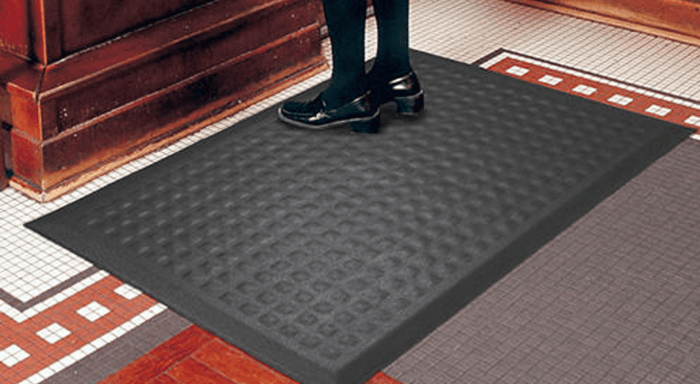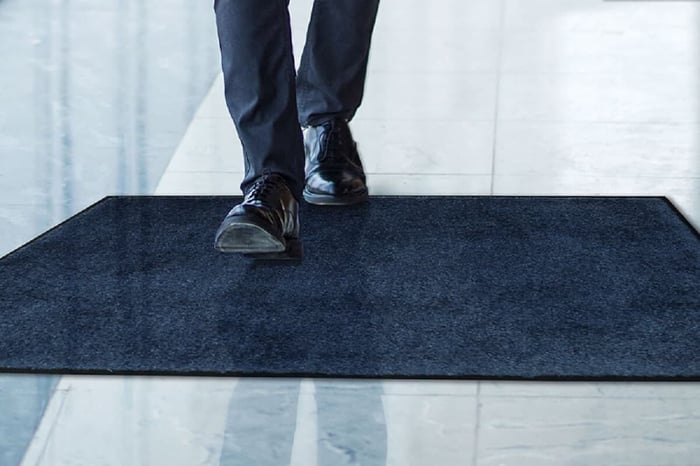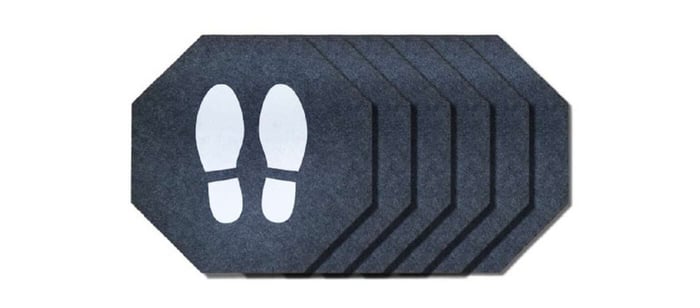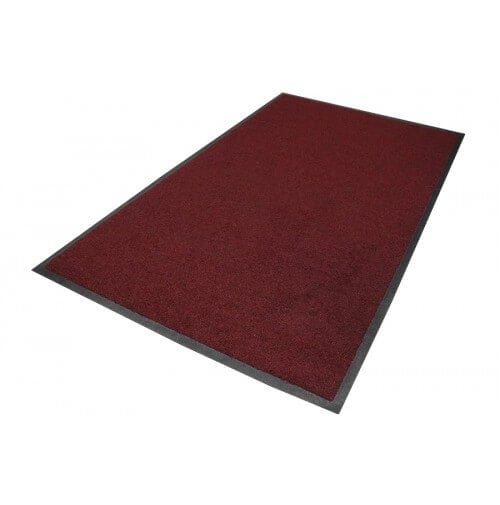Anti-Fatigue Matting 101
How anti-fatigue floor mats work. An uncomfortable work environment can negatively affect productivity and increase the likelihood of muscle strains and joint pain. Standing for long periods can cause Cumulative Standing Trauma (CST) which is linked to the loss of billions of dollars annually due to reduced productivity, higher absenteeism rates, increased worker compensation, and higher insurance rates. In this blog, Direct Textile Store will inform you with the necessary information to know about these mats.

Implementing ergonomic solutions, like industrial-grade anti-fatigue matting, can make employees more comfortable, and therefore more productive.

How Anti-Fatigue Matting Works
When jobs require an employee to stand for long periods of time, blood flow to the lower extremities is restricted causing soreness and fatigue. Anti-fatigue floor mats provide support to muscles in the lower legs and back and promote subtle movement in the leg and calf muscles which results in increased blood and oxygen flow.
Think about how it feels when you stand on a soft surface. The surface gives way as you apply pressure, and your lower body compensates with small muscle movements that stimulate the flow of blood and oxygen.
Compression Deflection
Compression deflection is the measurement used to gauge the displacement of an anti-fatigue mat under pressure. A load is applied to the mat and the results show the deflection as a percentage. Typically, one load is applied at 20 psi (pounds per square inch) which equates to a 150-pound person. Another load is applied at 40 psi which equates to a 600-pound person. Research suggests that the optimum deflection for both loads should fall between 20% and 60%. Anything less than 20% feels too hard, while anything over 60% can be perceived as too soft. Like Goldilocks, you need something in the middle that feels just right.
Understanding Material & Performance
Material directly impacts the mat’s performance and durability. The majority of anti-fatigue mats are made of one of three materials - PVC (vinyl), rubber, polyurethane – or a blend of the first two.
PVC (vinyl) is typically the low-cost leader in the group. However, as materials go, it’s far less durable than rubber or polyurethane, and more susceptible to environmental elements, even air temperature. PVC mats are notorious for rippling, cracking, and curling at the edges which can create an unsafe situation. When compared to rubber, vinyl is far less slip-resistant. In fact, when wet, many vinyl mats do not meet the minimum requirements for slip resistance. If you select a PVC anti-fatigue mat, we highly recommend choosing one whose surface is molded, not glued, to the foam base. This will reduce the likelihood of cracking, curling, and delamination to help prolong the life of the mat.
Rubber comes in two primary types, styrene-butadiene (SBR) and nitrile. Nitrile rubber offers a number of advantages over both PVC and polyurethane, especially in demanding industrial environments. Nitrile is incredibly slip resistant and not subject to degradation from grease or oil. It is resistant to many chemicals (see the list here) as well as slag, making it safe for use around welding and grinding. Nitrile rubber is naturally resistant to microbes like bacteria, but if you are in an environment sensitive to bacteria, we highly recommend using a nitrile product that has been anti-microbially treated to provide additional protection from bacteria and degradation.
As you can imagine, mats that blend PVC and nitrile rubber offer a blend of benefits between the two materials. PVC/nitrile-blended mats won’t be impervious to grease and oil like pure nitrile, but they will be resistant to it. Over time, grease and oil will degrade blended products so they are not recommended for environments with grease, oil, or certain chemicals. Nor are the suitable for environments with slag.
Polyurethane is typically the more expensive of the three materials, and while it offers excellent comfort and durability in commercial environments, it generally lacks the qualities necessary for success in tough industrial environments. In general, polyurethane mats provide appropriate solutions for dry to slightly damp or oily environments. Polyurethane is heat safe, but only up to about 400 degrees, so slag will cause significant damage.
Please note: We've made several generalizations about materials in order to provide you with a high-level understanding of the general pros and cons of each material. However, when you compare mats and materials, we highly recommend researching the specifications of the particular mats you are considering so you can make a direct comparison.
Environment & Usage Considerations
To select the best commercial mat for your particular needs, you must consider the quality and performance ability of the mat and your environment. Anti-fatigue floor mats are available in virtually every price range, but as you might expect, price is often linked to performance and durability. It’s imperative that you consider your specific needs and environment, and that you understand how a mat will perform under those conditions. Make sure you select a mat that can withstand the rigors of your environment and safely meet the requirements of your workspace.
- Would you characterize your environment as dry, damp, or wet?
- Are you working in a setting that’s sensitive to bacteria?
- Will your matting be exposed to grease and/or oil, or chemicals?
- Will workers be using plasma cutters, grinders, or welders that generate slag?
- Are you working with equipment or components that are sensitive to static electricity?
- Will you sweep/wipe down or hose off your mat to clean it, or do you want/need to sterilize it in an autoclave or have it commercially laundered?
The chart below is designed to help you determine which industrial mats meet your specific needs based on the questions above.

It's important to make sure you understand the expected service life of the mat in your environment. Service life is affected by usage to a large degree. For instance, let’s assume two identical manufacturing facilities purchase the same anti-fatigue mats. These facilities are identical in every way, except Plant A runs three shifts seven days a week, while Plant B runs two shifts five days a week. The mats in Plant B will be used roughly half as much as the mats in Plant A, and will subsequently have a much longer service life, pending no unexpected damage occurs to them.
Worn and damaged mats should be removed from service and replaced immediately. When mats are kept in service beyond their useful service life, they no longer deliver the anti-fatigue benefits they were designed to provide.

If you have questions or need help placing your order, call one of our live Customer Service agents Monday-Friday from 9am-5pm ET, or send an email to [email protected]
Direct Textile Store ships to all US states, including Alaska and Hawaii, US Territories, Canada, Puerto Rico, St. Thomas, and St. Croix.
About the Author
Haley Bridges, Marketing Assistant at Direct Textile Store
Haley Bridges has served as Marketing Assistant at Direct Textile Store, where she specializes in hospitality linens, uniforms, and bulk textile solutions. She works closely with hotels, restaurants, and healthcare facilities to match them with durable, high-quality products that balance both performance and value. Haley's expertise in textile sourcing and merchandising strategy helps businesses make confident purchasing decisions while staying ahead of industry trends.




